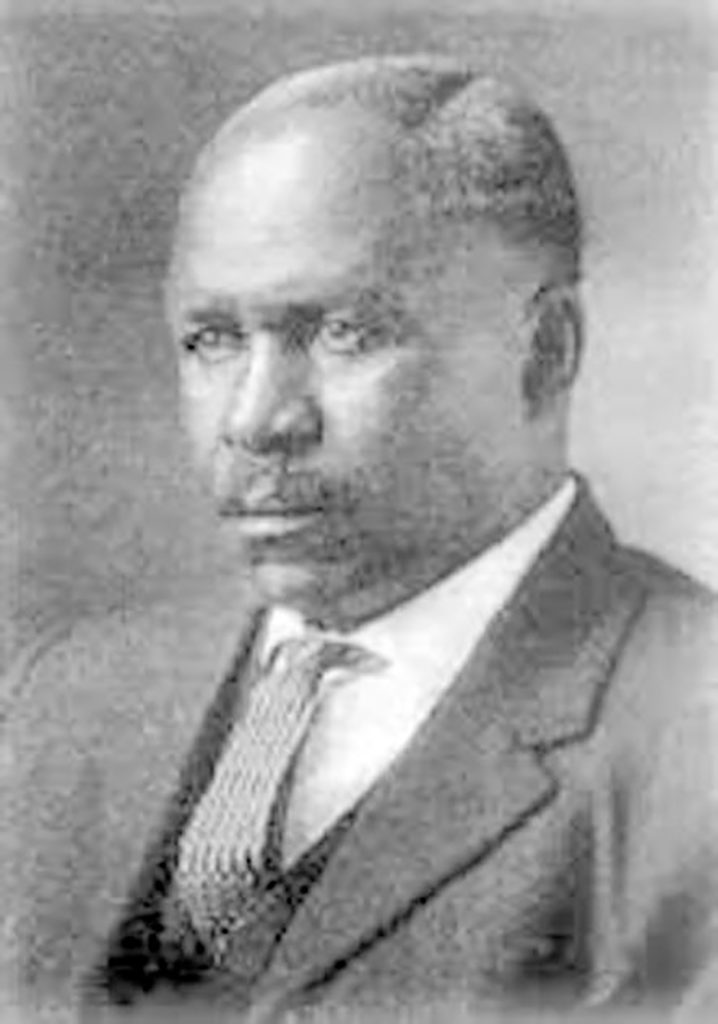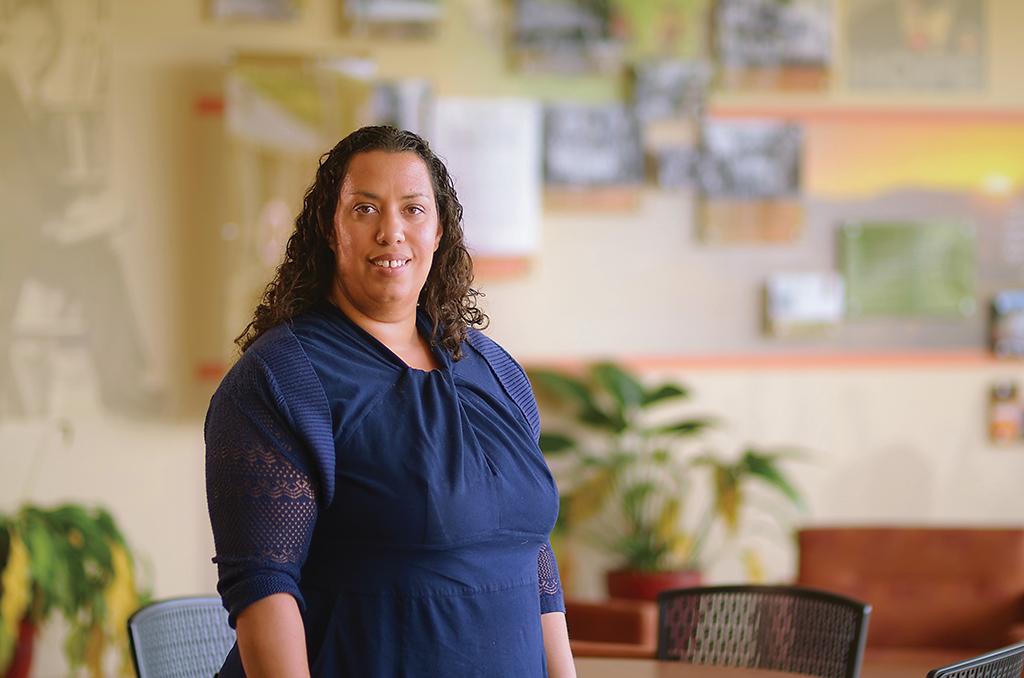In 1870, Henry was born into a humble and hardworking family in Madison County, Ky. He came to Berea College in 1889 and after nearly 10 years he earned two teaching certifications, all while working to help pay off his family’s farm. Henry used his teaching degree to educate students for 21 years in both Clark and Madison counties, and he founded and led a teaching institute for 20 years. He went on to serve as an agricultural extension agent, organizing farmer and homemaker clubs in Madison County. Henry’s most lasting legacy, however, may be his poetry and writings. One of his books of poems was so popular it went through four printings in 1914, 1924, 1947 and 1988. Henry is considered one of the most intellectually and creatively gifted to be born and live in Madison County. At a time when a college education was a rarity for anyone, Henry’s life, accomplishments and contributions to Appalachia are impressive.
Now imagine Henry is Black.

Henry Allen Laine was born the son of enslaved parents. As a teacher, he contributed to the cultural life of the county’s Black population in numerous ways. In 1910, he founded the Madison Colored Teachers Institute and he was the county’s first Black agricultural extension agent. He was responsible for organizing a chautauqua for the county’s Black residents, bringing nationally known speakers to Madison County such as George Washington Carver and W.E.B. Du Bois.
As an educator, agriculturalist, poet and author, “Madison County: 200 Years in Retrospect,” noted that no Black leader had more impact on the county in the first half of the 20th century than Laine. And in 2003, he was inducted into the Kentucky Civil Rights Hall of Fame.
Stories like Laine’s often are unknown, overlooked or untold in the recounting of Appalachian history—
stories of African American or Indigenous heritage, influence and contribution to the region that have had rippling effects for generations. Laine’s story mingles with so many others, like brothers Green and JDM Russell, from Logan County, Ky., who both became prominent educators. Green Russell graduated from Berea College in 1885. He was the first licensed African American teacher in Lexington, Ky., and was president of Kentucky State Industrial College for Colored Persons, now known as Kentucky State University. Professor JDM Russell served as principal of Richmond High School in Richmond, Ky., when the 10-room building opened its doors in 1900.

Fannie Belle Miller 1888 and Frank L. Williams 1889 met at Berea College and later married before settling in St. Louis and serving as teachers, business owners and civic leaders. The Millers helped raise money to build a YMCA for Black people in St. Louis and provided new homes by building a 21-unit apartment building, according to the website Early History of Black Berea, maintained by Dr. Jackie Burnside ’74. And Mary Eliza Merritt 1902 was the first African American to be licensed as a registered nurse in Kentucky. She became superintendent of Red Cross Hospital for 34 years before turning it over to the city of Louisville in 1945.
Bringing back history
In her class, Black and Indigenous People in Appalachia, Dr. Jessica Klanderud stresses the importance of African Americans and Indigenous people in Appalachia, where many default to the idea of an all- or mostly white region of communities.

“One thing I felt strongly about when taking the class over is that we do not pay enough attention to the diversity that always has been present in the region,” said Klanderud, director of Berea’s Carter G. Woodson Center for Interracial Education.
However, minority stories and contributions to the region were not captured and passed along in history. Very little has been written about many of them and it is a challenge to find what was written in the past. For some, their stories have only been told by word of mouth. Over time, many African American families also left rural areas following jobs and hopes of better futures and settled in larger cities like Pittsburgh, Detroit and Columbus, said Klanderud, who is from Pittsburgh.
“The family connections they had in rural areas and coal towns, they brought that with them to the cities,” she explained. “It’s not different from the holler to the city, except it’s not mountains and rivers making people groups any more, but the family construction that they brought into the city. People don’t think of Pittsburgh as being in Appalachia, but it’s the biggest city in Appalachia.”
The missing voices in Appalachian history are more than just Black voices, but those of indigenous and Latinx people as well.
“The Shawnee and Cherokee were here first,” Klanderud explained, “and they were agriculturalists long before anyone came over the mountains.
And when we talk about Europeans coming in to Appalachia,” she continued, “we always talk about the British, but the colonial empire was first Spanish—Latinx populations have been in Appalachia since the early colonial days. So that idea that Latinx populations are new in Appalachia is also not true. That is a mind-blowing moment for many students.”
Laying the groundwork
Offering courses like Black and Indigenous People in Appalachia that broaden the perspective of students and challenge their thinking is core to the liberal arts education Berea College has always offered all its students. Klanderud stresses how just as important as educating Blacks and whites together was to the College’s foundation, providing a liberal arts education to Black people was paramount.
“Most schools training Black students, especially those that were not historically Black colleges, could only do a trades or vocational education,” she said. “But Berea allowed them to study music and art and math in an integrated setting. Other schools were on a lower level and their vocation studies were more like getting a GED—students were only getting that specific training. Berea, however, was investing in people in a different way.”
That difference can be seen in the numerous graduates Berea produced who went on to change the world as doctors, authors, educators, lawyers, entrepreneurs through today as artists, professors, judges, poets, veterans, ministers and more.
Blacks in Appalachia
To learn more about notable Kentucky African Americans, visit https://nkaa.uky.edu.
You can also access a reading list and streaming videos from the
Black and Indigenous People in Appalachia course.


This makes me even more proud to have graduated from Berea College.
So thankful for the privilege to be part of the Berea family, especially for the education I received there. As Steven Pinker pointed out in his book Enlightment Now: The Case for Reason, Science, Humanism and Progress (p 339) “…education, when it does what it is supposed to do, instills a respect for vetted fact and reasoned argument, and so inoculates people against conspiracy theory, reasoning by anecdote and emotional demagoguery.” I will never forget the message at graduation: it is not the end of learning, it is the beginning as one has to continue to educate oneself.